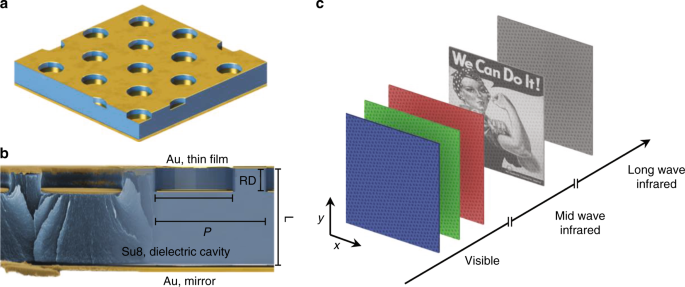Nanowerk December 17, 2018
Researchers at Rice University found that in molybdenum disulfide a dash of rhenium in just the right spot makes a configuration of atoms with energy states that sit comfortably inside and are isolated from the material’s natural band gap. Aligning magnetic moments of atoms in the defect and exciting them with light brings them to a higher energetic state making them exit as single photon. The direction of the photon is not understood, but the researchers suspect that it is well defined. The defect’s optical transition lies in the optical fiber telecommunication band, which is ideal for integration into photonic circuits. They also modeled tungsten diselenide, zirconium disulfide, boron nitride, tungsten disufide, diamane and 3D diamond…read more. TECHNICAL ARTCLE

Schematic of the cavity-coupled plasmonic device consists of a back mirror, an imprinted array of holes in a polymer, and a second evaporation of gold to create disks and a perforated film. Credit: Light: Science & Applications volume 7, Article number: 93 (2018)